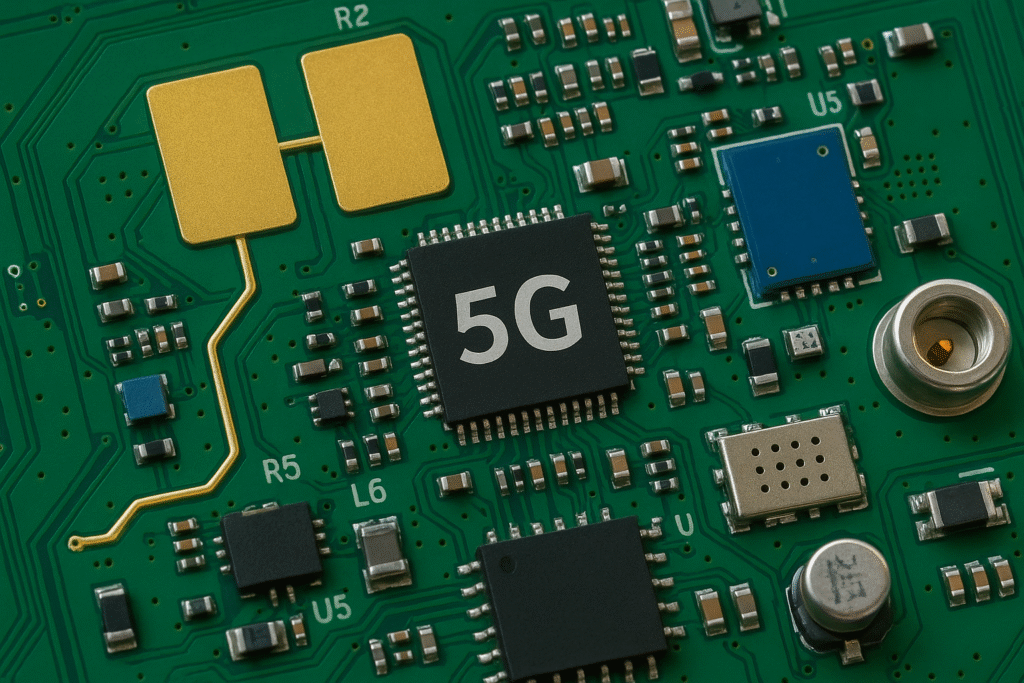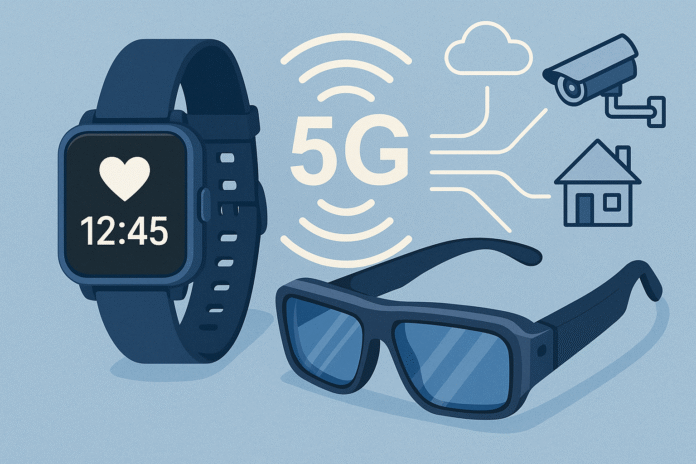The rollout of 5G is reshaping the wireless industry, affecting everything from smartphones to IoT devices and industrial automation. With higher speeds, ultra-low latency, and massive connectivity, engineers must rethink how they build wireless hardware and optimize pcb design to meet these new requirements. Unlike 4G, 5G introduces multiple frequency bands, advanced antenna systems, and stricter power management needs. This makes wireless product design more demanding but also more rewarding for those who adopt the right strategies.
Impact of 5G on Wireless Product Design
5G impacts wireless product design at every level. From RF circuits to thermal considerations, devices must handle broader frequency ranges, faster data transfer, and real-time communication. Unlike previous generations, 5G requires:
- Integration of sub-6 GHz and millimeter-wave frequencies.
- Advanced antennas, including phased arrays and MIMO configurations.
- High-speed PCBs with controlled impedance and low-loss materials.
- Improved thermal systems to handle higher processing loads.
- Efficient power distribution to extend battery life while maintaining performance.
These changes influence not just smartphones but also wearables, healthcare devices, industrial sensors, and smart city infrastructure.
Challenges of Designing Wireless Products with 5G
The promise of 5G brings challenges for engineers:
- Signal Integrity: At millimeter-wave frequencies, signal losses are higher, requiring low-loss PCB materials and precise routing.
- Miniaturization: Devices must remain small and lightweight, yet include multiple antennas and RF modules.
- Thermal Management: Faster processors and high-frequency circuits generate heat that must be dissipated efficiently.
- Testing Complexity: Higher frequencies demand specialized testing equipment, including over-the-air (OTA) test environments.
- Regulatory Standards: Devices must comply with stricter EMI/EMC regulations due to 5G’s broad frequency spectrum.
These hurdles push engineers toward innovative solutions, including flexible PCBs, advanced shielding, and modular designs.
5G Technology in Wireless Devices
5G introduces three main technology categories:
- Enhanced Mobile Broadband (eMBB): High data rates support 4K video, AR/VR, and immersive applications.
- Ultra-Reliable Low-Latency Communications (URLLC): Latency below 1 ms supports autonomous driving and remote medical procedures.
- Massive Machine-Type Communications (mMTC): Connectivity for millions of IoT devices in smart cities and industrial automation.
Each category places unique demands on hardware. For instance, eMBB requires high-bandwidth PCBs and advanced antennas, while mMTC emphasizes ultra-low-power designs.
Design Considerations for 5G Products
Designing a 5G-enabled product involves multiple considerations:
PCB Materials and Layout
Traditional FR-4 materials cannot support millimeter-wave frequencies effectively. Engineers often use Rogers, Isola, or Taconic laminates to reduce losses. Multi-layer PCBs are common, with dedicated ground planes to stabilize signals. Routing requires controlled impedance and attention to crosstalk reduction.
Antenna Integration
5G products often incorporate multiple antennas, including phased arrays for beam steering. Antennas may be PCB-integrated or embedded in modules. Placement is critical to avoid interference and optimize coverage, especially in small form-factor devices.
Power Management
5G circuits consume more power than 4G. Dynamic power scaling, efficient RF power amplifiers, and low-dropout regulators help balance performance with energy use. For IoT devices, long battery life remains a top priority, requiring careful optimization.
Thermal Solutions
High-speed processors and RF circuits generate heat. Thermal vias, copper pours, and graphene-based materials are used to manage temperature. For wearables, maintaining user comfort is especially important.
Component Selection
5G devices require high-frequency components, including low-noise amplifiers (LNAs), RF switches, and advanced filters. These components must be integrated into compact layouts without compromising performance.
Effect of 5G on IoT Devices
5G enables IoT systems at a scale previously impossible. From smart agriculture to connected healthcare, IoT benefits from 5G’s massive connectivity and low latency. However, IoT devices must address key issues:
- Energy efficiency: Many IoT devices are battery-operated, demanding ultra-low-power modes.
- Cost constraints: Large-scale deployments require affordable components and optimized pcb design.
- Reliability: Industrial IoT systems must function in harsh conditions, requiring robust design and shielding.
In agriculture, IoT sensors transmit soil and crop data in real-time over 5G. In healthcare, wearable monitors send continuous patient data with low latency. In logistics, asset-tracking systems use 5G to provide real-time updates.
Testing and Validation in 5G Product Design
Testing plays a critical role in validating 5G products:
- Signal integrity analysis: Ensures high-frequency traces maintain performance.
- EMI/EMC compliance: Protects devices from interference and ensures regulatory approval.
- OTA testing: Verifies antenna performance in real-world scenarios.
- Thermal stress tests: Evaluate how devices perform under heavy loads.
Engineers use simulation software, automated test systems, and specialized chambers to verify performance before mass production.

Opportunities Enabled by 5G in Product Design
Despite challenges, 5G brings enormous opportunities:
- AR/VR devices: Higher bandwidth enables immersive experiences without lag.
- Autonomous vehicles: 5G supports vehicle-to-everything (V2X) communication for safety and navigation.
- Medical devices: Remote surgery and real-time monitoring benefit from ultra-low latency.
- Industrial automation: 5G enhances factory monitoring, predictive maintenance, and robotics.
The future of wireless devices will rely on designs that combine performance with efficiency, scalability, and user safety.
Looking Ahead: Preparing for 6G
While 5G is still rolling out globally, research into 6G is underway. With potential terahertz communication and AI-driven networking, the lessons learned from 5G product design—particularly in pcb design, antenna systems, and thermal management—will prepare engineers for the next generation of challenges.
Conclusion
The transition to 5G is redefining wireless product engineering. The impact of 5G on wireless product design extends from PCB materials and antenna integration to thermal management and IoT scalability. Engineers face challenges with high frequencies, power efficiency, and testing requirements, but the opportunities outweigh the difficulties. Products designed for 5G must balance performance, efficiency, and miniaturization. Companies that invest in optimized pcb design and forward-thinking strategies will lead the next wave of wireless innovation.
